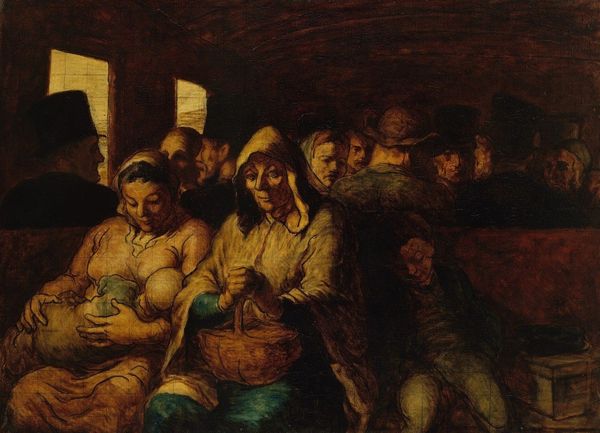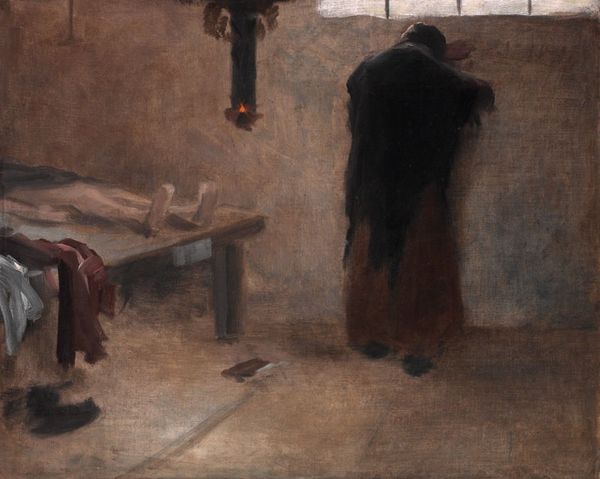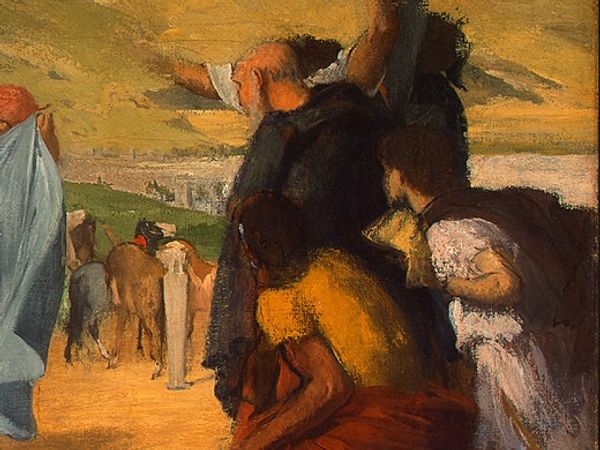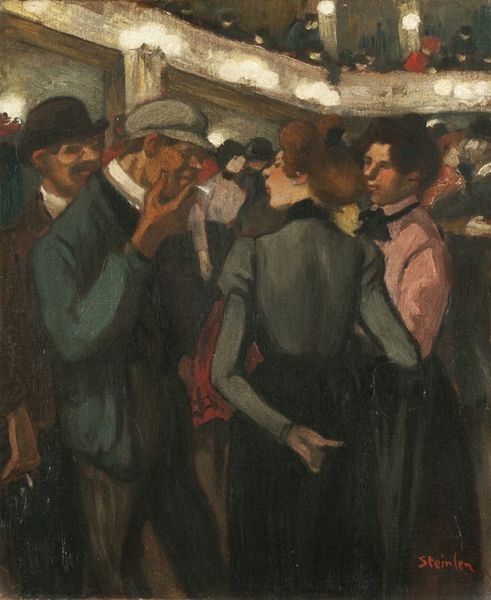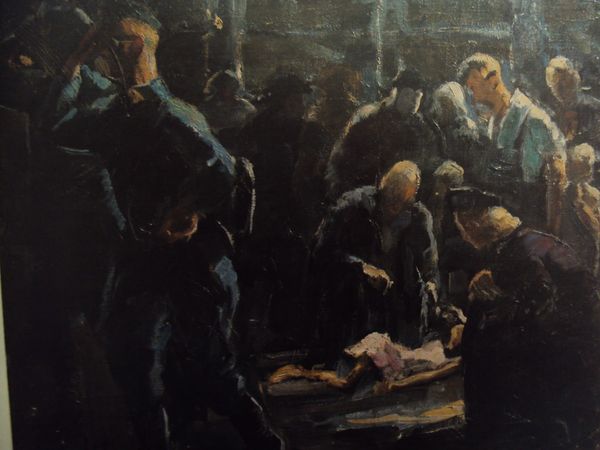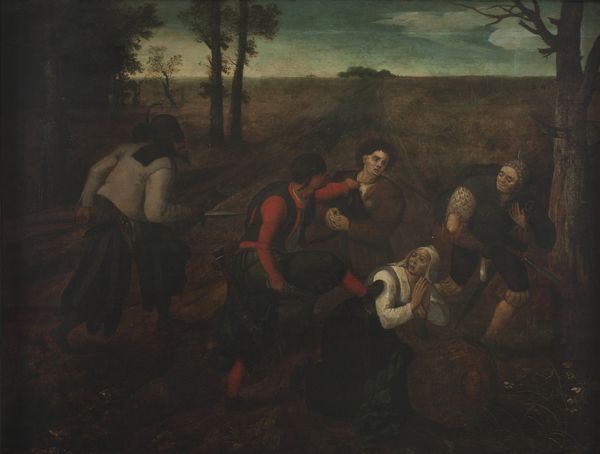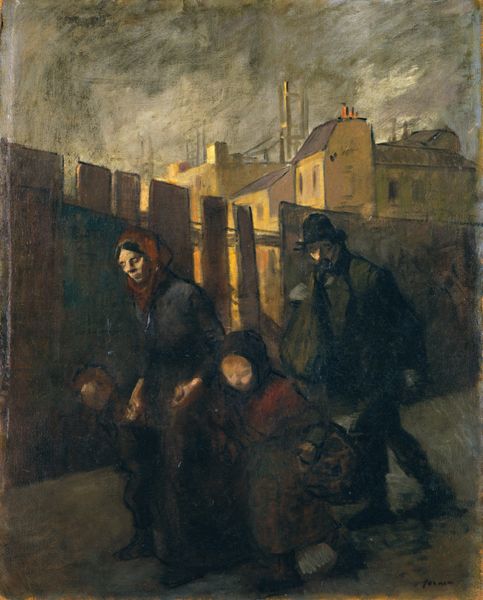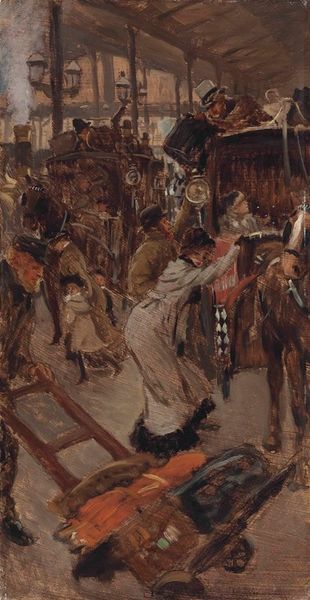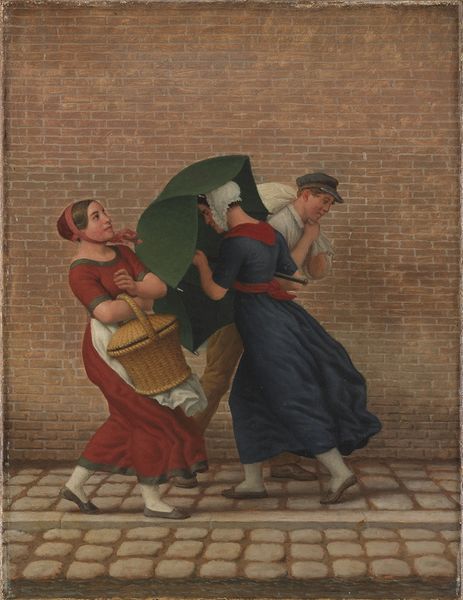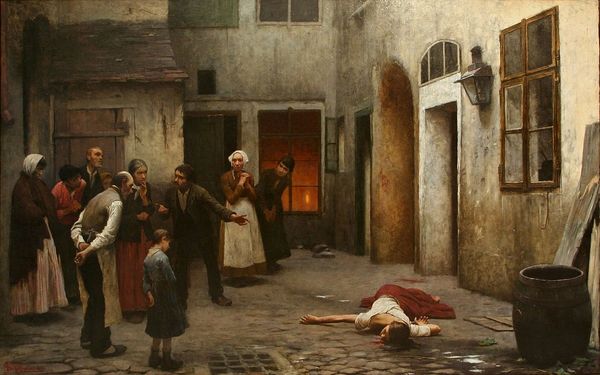
Copyright: Public Domain: Artvee
Editor: We're looking at "The Laundresses," an 1899 oil painting by Théophile Alexandre Steinlen. It has such a gritty feel. You can almost smell the soapy water and feel the weight of the linens. What stands out to you in this piece? Curator: What strikes me is how Steinlen situates these women within a very specific social context. Laundresses in late 19th century Paris were a readily visible part of the urban landscape, performing grueling work. The image isn’t romanticizing their labor; it’s showing us the reality of it within the social strata of Paris. Consider how the public perception of laboring classes was shifting with burgeoning socialist ideals – how does that influence Steinlen’s depiction here? Editor: I guess it does make them seem… dignified, somehow. It’s not glorifying them, but definitely acknowledging their presence. Are the women idealized in any way, or is it meant to be realistic? Curator: The composition itself is interesting. We're viewing them from street level, immersed in their environment. There is a theatrical stage-lighting coming from the building behind them, casting stark shadows on the street which emphasizes their presence in this urban landscape. It's not just a portrait; it is the gritty details of their working conditions which draws me to ponder whether Steinlen is challenging the art world to recognise the dignity of every-day individuals in Parisian society? What do you think? Editor: I hadn't considered the lighting so symbolically, I was focused more on the subjects themselves. Thanks, that adds another layer! I see this painting now as more of a social commentary than I first thought. Curator: Precisely! And that intersection, that dialogue between art and social awareness, is so crucial for understanding this period.
Comments
No comments
Be the first to comment and join the conversation on the ultimate creative platform.
